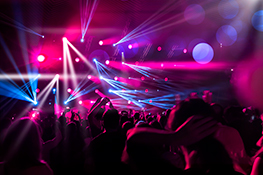Stage Lighting Design for Beginners: A Simple Guide to Getting Started
Understanding the Basics of Stage Lighting
Stage lighting is more than just illuminating a stage; it’s a powerful storytelling tool. It sets the mood, guides the audience’s eye, and enhances the overall theatrical experience. This beginner’s guide will introduce you to the fundamental concepts of stage lighting design, equipping you with the knowledge to start your journey in this captivating field.
Before diving into the technical aspects, it’s crucial to understand the core principles. Think about the story you want to tell. What emotions do you want to evoke? What areas need highlighting, and which should remain in shadow? These are the questions that will guide your design choices.
Types of Stage Lighting Instruments
Various lighting instruments serve different purposes. Familiarizing yourself with these is essential:
- Fresnel: Known for their soft, even wash of light, Fresnels are ideal for illuminating large areas of the stage.
- Ellipsoidal (Lekos): These produce a sharp, focused beam, perfect for highlighting specific actors or objects. They often use gobos (metal templates) to create patterns or shapes.
- Parabolic Aluminized Reflector (PAR) Cans: These are powerful lights offering a wide beam spread, often used for backlighting or general wash.
- Profile Spotlights: Similar to ellipsoidal reflectors, but with a slightly softer edge, these are also excellent for focusing on specific areas.
- LED Lighting: Energy-efficient and versatile, LEDs are rapidly becoming the industry standard, offering a wide array of color temperatures and effects.
Color and Gel Filters: Shaping the Mood
Color is a fundamental element in stage lighting. Gel filters, thin sheets of colored plastic, are placed in front of lights to alter their color temperature and create specific moods. Warm colors (reds, oranges, yellows) evoke feelings of comfort and excitement, while cool colors (blues, greens, purples) can suggest calmness or mystery. Experimenting with color combinations is key to finding the right atmosphere for your production.
Lighting Plots and Design Software
A lighting plot is a crucial document that visually represents your lighting design. It shows the position of each light, its type, color, and angle. While hand-drawn plots are still used, many designers use specialized software like Vectorworks, WYSIWYG, or Capture to create detailed 3D models and simulations of their designs. These tools are invaluable for visualizing the final effect and making adjustments before the actual setup.
Practical Tips for Beginners
Starting with stage lighting can feel overwhelming, but here are some practical tips to get you started:
- Start small: Begin with a small-scale project, like lighting a school play or a small band performance.
- Learn the basics of electricity and safety: Working with electricity requires caution. Always prioritize safety and follow proper procedures.
- Practice makes perfect: Experiment with different light types, colors, and angles to understand how they affect the overall look.
- Seek feedback: Ask for feedback from others on your lighting designs. Constructive criticism is essential for improvement.
- Network with other lighting professionals: Join online forums, attend workshops, and connect with experienced lighting designers to learn from their expertise.
Conclusion: Illuminating Your Creative Journey
Stage lighting design is a rewarding field that blends creativity, technical skill, and storytelling. By understanding the fundamental principles and gradually gaining experience, you can transform your productions with the magic of light. Embrace the learning process, experiment with different techniques, and most importantly, let your creativity shine.


 Auditorium Construction Services
Auditorium Construction Services 